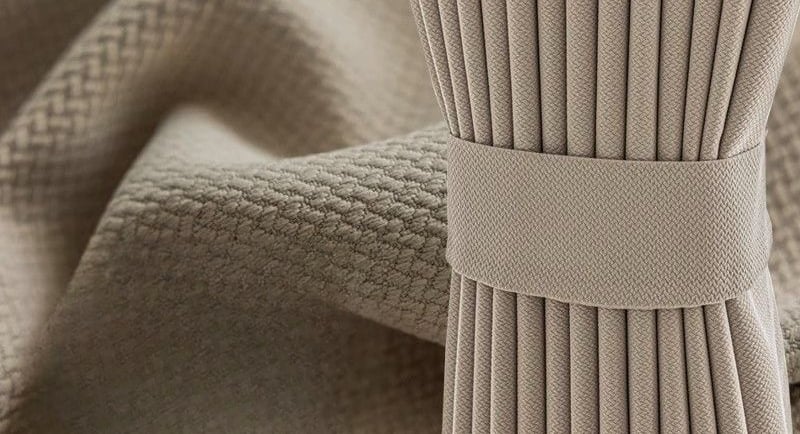Modern Minimalism: Selecting the Right Curtain Fabrics for a Clean and Contemporary Look
11/28/20244 min read


Understanding Modern Minimalism in Interior Design
Modern minimalism in interior design is a transformative approach that emphasizes simplicity, functionality, and a decluttered aesthetic. Originating in the mid-20th century, minimalism has evolved from a response to ornamentation prevalent in previous design movements. Its core principles revolve around the idea that less is more, encouraging designs and layouts that eliminate excess to create serene and inviting spaces. This philosophy fosters a reliance on essential elements that provide both beauty and utility.
A defining characteristic of modern minimalism is the use of clean lines and open spaces. This design style prioritizes clarity and the effective use of space, allowing each piece of furniture or decor to stand alone in its significance. Color palettes are typically muted and neutral, promoting a sense of calm and coherence throughout the interior. Such visual tranquility is paramount in minimalism, as it contributes to the overall experience that a space offers to its occupants.
The role of textiles, including curtain fabrics, is particularly noteworthy in minimalist environments. Fabrics can elevate a minimalist space by adding texture and warmth without detracting from its streamlined essence. Choosing the right curtain fabrics is vital; lightweight options like sheer linens or cotton blends can allow natural light to permeate a space while maintaining privacy. In contrast, heavier curtains might disrupt the airy feeling that is crucial to minimal design. Additionally, the pattern and color of textiles must align with the minimalist ethos, as simple designs and soft neutral shades can complement the overall aesthetic. Ultimately, when executed thoughtfully, textiles play a crucial role in reinforcing the principles of modern minimalism, enhancing the harmony of the environment.
Key Characteristics of Curtain Fabrics for a Minimalist Aesthetic
When selecting curtain fabrics that embody a modern minimalist aesthetic, several key characteristics come into play. The choice of fabric can significantly influence the overall ambiance of a space, contributing to a clean and contemporary look. One of the primary features to consider is the color palette. Minimalist design often favors neutral tones such as whites, greys, and soft beiges, which help to create a sense of calm and spaciousness. These colors not only enhance the natural light in a room but also make the fabric blend seamlessly with the surrounding decor.
Another important characteristic is texture. Minimalist aesthetics benefit from smooth, soft, or matte finishes which add subtle depth without overwhelming the senses. Fabrics like linen, cotton, or sheer polyester provide a refined touch, maintaining the simplicity that is fundamental to minimalism. It is essential to avoid overly ornate patterns or heavy textures, as they can detract from the desired uncluttered look.
Weight is also a crucial consideration when choosing curtain fabrics. Lightweight materials contribute to an airy feel, allowing light to filter through while still providing some level of privacy. For example, sheer drapes or light cotton curtains gently diffuse sunlight, creating an inviting atmosphere without sacrificing the minimalist approach.
Transparency plays a significant role in achieving a minimalist aesthetic. The right level of transparency not only enhances the natural light in a space but also creates a sense of openness. Fabrics that are semi-sheer can maintain the needed privacy while still allowing an abundance of daylight to permeate the area. By focusing on these essential characteristics—color, texture, weight, and transparency—one can select curtain fabrics that perfectly align with a modern minimalist design and foster a serene environment.
Selecting the Right Patterns and Colors for Your Space
When embarking on a journey towards modern minimalism, the choice of curtain fabrics plays a pivotal role in achieving a clean and contemporary aesthetic. To maintain a minimalist design, it is advisable to lean towards solid colors or subtle patterns, as these elements can beautifully harmonize with the overall decor. Neutral tones such as whites, beiges, grays, and soft pastels are particularly effective in creating a serene environment, bringing a sense of calm and spaciousness to any room.
Incorporating subtle patterns can also contribute to visual interest without overwhelming the minimalist theme. Consider fabrics with gentle textures or faint designs that add depth while remaining understated. Geometric shapes or organic motifs in light hues can subtly enhance the ambiance, supporting the clean lines typically associated with minimalism.
Cohesion between curtain fabrics and other elements in your space is crucial. Pay close attention to your existing color palette. For example, if your walls are painted in a soft gray and you have furniture in light wood tones, choosing curtains that echo these colors can create a seamless visual flow. One effective strategy is to select a fabric that incorporates hues present in surrounding decor. This connection ensures that curtains do not stand out jarringly but instead serve as an integral part of the room's overall design.
Additionally, consider the fabric's texture in relation to other materials in your space. Soft and sheer curtains can beautifully contrast with heavier furniture, enhancing the minimalist allure. Ultimately, the goal is to select curtain fabrics that resonate with the room's essence while promoting an open and uncluttered feel characteristic of modern minimalism.
Practical Tips for Maintaining Your Minimalist Curtains
Maintaining curtain fabrics in a minimalist home is crucial for preserving their aesthetic appeal and ensuring longevity. The essence of modern minimalism lies in a clean and clutter-free environment, which can be greatly enhanced by properly cared-for curtains. To begin with, choosing the right cleaning method is paramount. Most curtain fabrics can be either washed at home or dry cleaned, depending on their material. Always check the care label for specific instructions. For instance, lightweight fabrics such as linen or cotton can typically be machine-washed in cold water, while heavier materials like silk may require professional cleaning.
The frequency of care varies by usage; however, regular maintenance is advisable. An ideal practice is to dust the curtains once a week using a soft brush or a vacuum with a brush attachment. This aerates the fabric and helps minimize the buildup of dust and allergens. For deeper cleaning, consider washing your curtains every six months. This helps retain their color and texture, ensuring they continue to enhance the minimalist aesthetic.
To prevent wear and tear over time, avoid placing curtains near direct sunlight for prolonged periods, as this can lead to fading. Ensuring proper installation is also vital; the use of sturdy hardware can prevent sagging, which often detracts from a clean look. When the curtains are not in use, storing them properly is essential. Use breathable cotton fabric bags to protect them from dust and damage. Additionally, when arranging curtains for a tidy appearance, opt for a simple and tailored approach, avoiding excessive draping or layering that can compromise the minimalist theme.
By adhering to these practical maintenance tips, you can ensure that your curtain fabrics contribute positively to the modern minimalism of your space, remaining fresh and stylish for years to come.
Curtains&Fabrics
Design,production,sales,service in curtain fabrics&curtians.
Quality
Products
sales01@anytextile.com
+8615968501933
© 2024. SHAOXING LEYAO IMPORT AND EXPORT CO.LTD All rights reserved.
